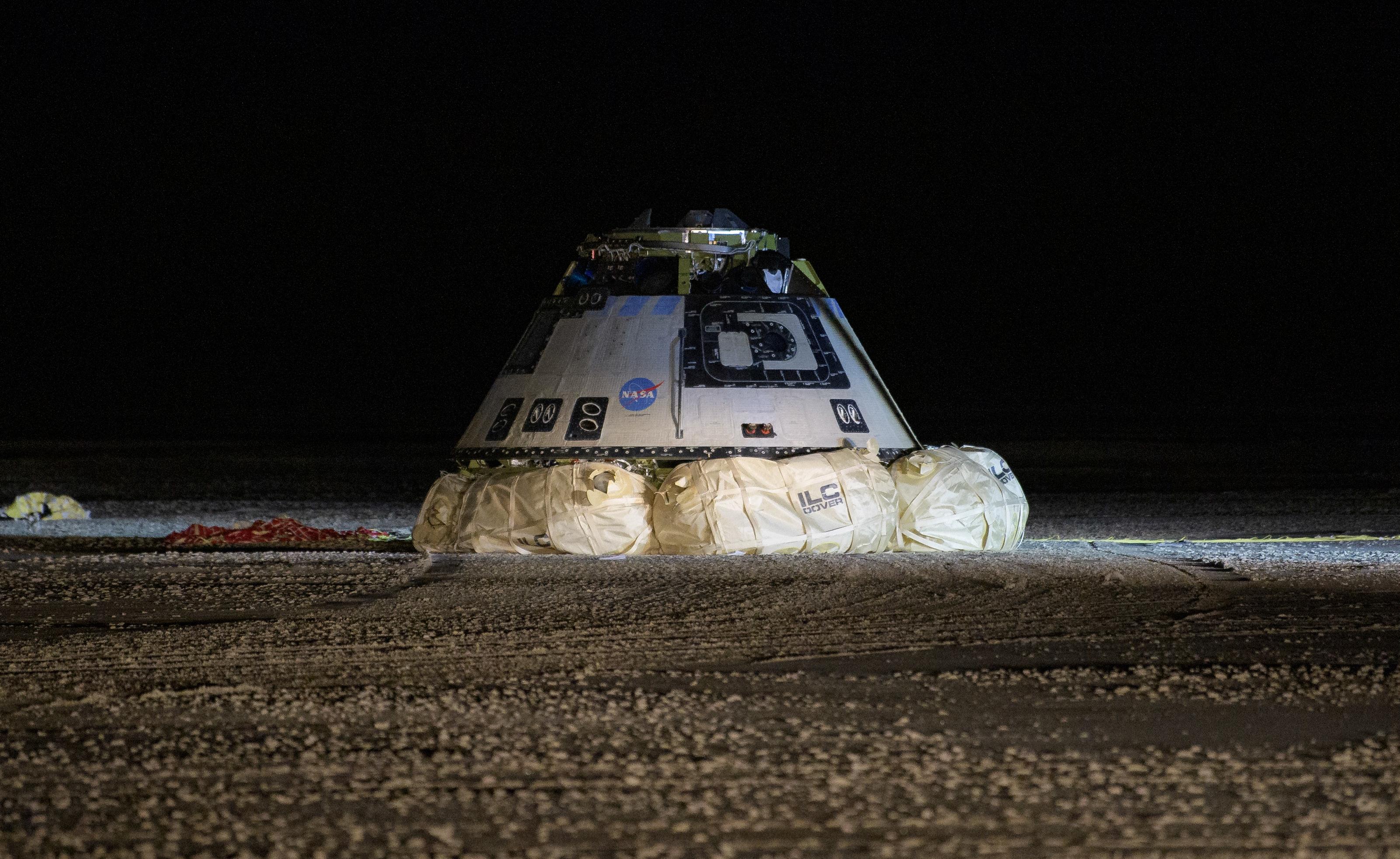
CAPE CANAVERAL — Boeing’s CST-100 Starliner, a commercial low Earth orbit human transportation system developed in partnership with NASA, returned from an abbreviated debut orbital flight test on Dec. 22 after an early software misstep nixed a planned docking at the International Space Station.
The problem manifested after the upper stage of the United Launch Alliance Atlas V released Starliner into orbit following launch on Dec. 20. Starliner’s clock, which was set before liftoff, was 11 hours off from the correct mission elapsed time, which caused it to miss a planned 40-sec. burn to put itself into an orbit to rendezvous with the ISS.
Instead, the capsule, believing the burn had already occurred, was steadily and rapidly firing thrusters to maintain attitude. Flight directors, working from a leased mission control room at NASA’s Johnson Space Center in Houston, tried to communicate with Starliner using NASA’s Tracking and Data Relay Satellites, but the spacecraft was not oriented properly to pick up the signals.
By the time communications were established and the clock reset, Starliner’s fuel margins were too close to attempt another orbital insertion burn. Through a series of shorter burns, the capsule was able to navigate into a circular 155-mi (250 km) high orbit, said Jim Chilton, senior vice president of Boeing’s space and launch division.
From that perch, the Boeing team put the capsule through a number of tests, including extending and retracting the docking system, establishing communications with the ISS and navigating in orbit. Most important, Starliner was able to successfully deorbit, reenter the atmosphere and make a pinpoint parachute landing on the ground—a first by a U.S. human-class capsule. Starliner returned after 33 orbits with a 7:58 a.m. EST touchdown at the White Sands Missile Range in New Mexico on the runway once used by the space shuttle program.
Boeing had planned to dock at the ISS on Dec. 21 and return to Earth on Dec. 28.
“This did not go according to plan in every way that we would have hoped, but it is also true that we got a lot of really good information so we can keep making meaningful progress,” NASA Administrator Jim Bridenstine told reporters after the landing. “That’s very good from my perspective.”
Boeing’s Chilton said that even though the docking did not occur, he expects to be able to glean 85-90% of the expected flight test data. In addition to the inflight operations and landing systems, the test successfully demonstrated a new aerodynamic configuration and flight profile of the Atlas V, which is needed to certify the vehicle for human spaceflight.
“We have a going design here,” Chilton said. “We didn’t do everything we wanted to do, but we don’t see anything wrong with this spaceship right now.”
The capsule, newly named Calypso, will be taken to Florida for refurbishment. It is expected to be flown on the first operational ISS crew rotation mission, possibly in late 2020. Before then, Boeing, along with NASA’s second Commercial Crew program provider SpaceX, must complete crewed flight tests, targeted for the first half of 2020, and pass certification analyses and reviews.
The schedule for Boeing could be impacted by the investigation into why the timing error occurred, particularly if the software glitch could impact other systems. NASA and Boeing also will need to assess if the crewed flight test of Starliner can proceed without having previously tested the ISS docking.
The next step in the Commercial Crew program, which has been in development since 2010, is a Jan. 11 inflight abort demonstration of SpaceX’s Crew Dragon capsule.




Comments